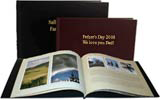Assumptions get us into all kinds of trouble. For years I searched for an ancestor, Noentjelena Grass, in passenger lists, trying all kinds of variants of her first and last names. Censuses, family tradition, and her date of marriage gave me a consistent immigration time frame, but I still could not find her.
I had almost given up. Then I received copies of letters she had written to relatives about ten years after her marriage. Not one clue about her immigration, but there were more subtle revelations. The letters were all signed “Lena.†Not Noentjelena or Noentje (names I thought she used), but Lena. After reading the letters it dawned on me–I had never really searched extensively for that first name in the manifests. So I went back.
A search of the passenger lists at Ancestry.com during New York’s Castle Garden era contained an entry for a Luie Gross arriving in 1873. The year was correct for my ancestor. Looking at the actual manifest the name looked like Lena to me, although I could see how it could have been read as Luie. Fortunately this entry was for a single female with a year of immigration and an age consistent to be my ancestor. Further work needs to be done so I can be reasonably certain I have the correct person, but I think I am on the right path.
Do you really know your ancestor’s name? Have you considered every nickname he or she might have used? Failure to consider one may cause the relative to remain unfound forever.



![Mae [Otis] Green, welder 1942 Mae [Otis] Green, welder 1942](https://blogs.ancestry.com/circle/files/2008/05/20080519Welder.bmp)




